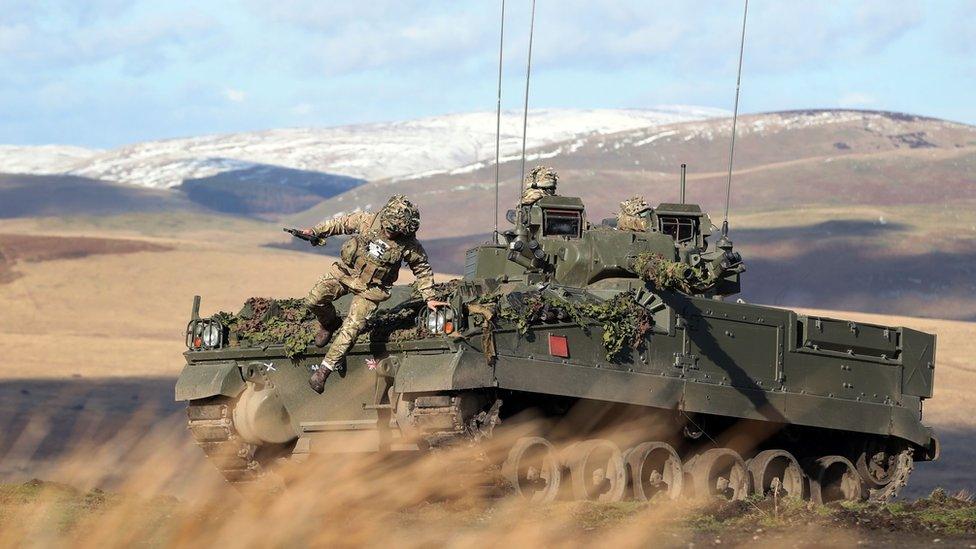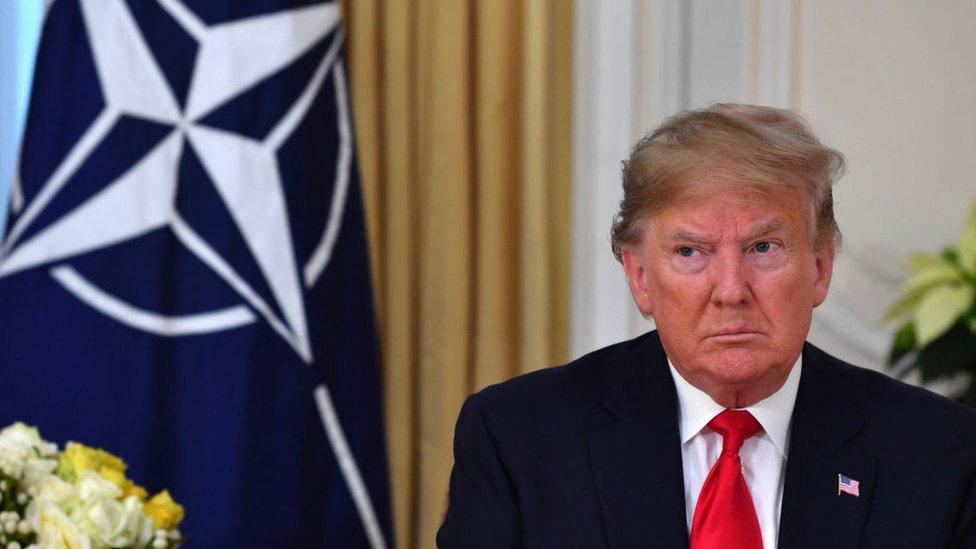How much of a threat does Russia pose, and to whom?
- Published
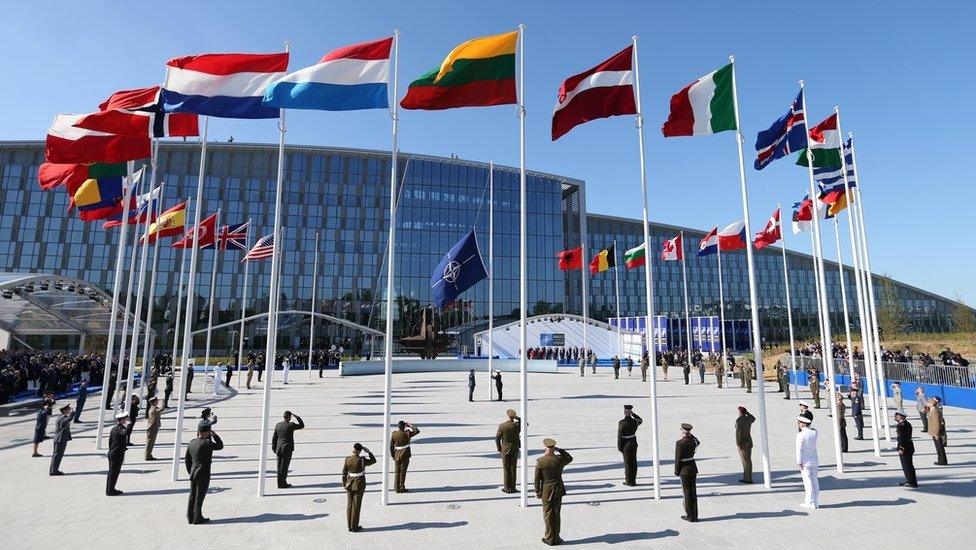
Nato countries have sent battle groups to deter any Russian move west
Nato defence ministers are reviewing progress in what's known as the alliance's "enhanced forward presence" - its deployment of troops eastwards to reassure worried allies, and deter any Russian move west.
Nato has dispatched four battalion-sized battle groups, one deployed in Poland and one in each of the three Baltic republics: Latvia, Lithuania and Estonia.
The US has also begun to bring back heavy armoured units to western Europe.
The whole effort is prompted by the shock emanating from Russia's seizure and subsequent annexation of the Crimea, and its continuing support for rebel groups in eastern Ukraine.
If Moscow could tear up the rule-book of security in post-Cold War Europe by carving off a slice of Ukraine (as it previously did in Georgia), many feared the Baltic republics - also territory of the former Soviet Union - could be next.
Russia says that in response to these Nato moves, it is making new deployments of its own. But the reality is rather more complex. I've been speaking to some of the leading Western experts on the Russian military to get a sense of what is behind Russia's modernisation effort, and to determine what threat it really poses and to whom.
"Russia would like us to think that its current militarisation and preparations for conflict are a response to Nato doing the same, but it's simply not true."
That's the view of Keir Giles, director of the Conflict Studies Research Centre, and probably Britain's leading watcher of Russian military matters.
"Russia's enormously expensive reorganisation and rearmament programme," he told me, "was already in full swing well before the crisis over Ukraine, while Nato nations were still winding down their militaries.
"As late as 2013, the US withdrew all its armour from Europe - while Russia was already busy investing billions in upgrading its forces."
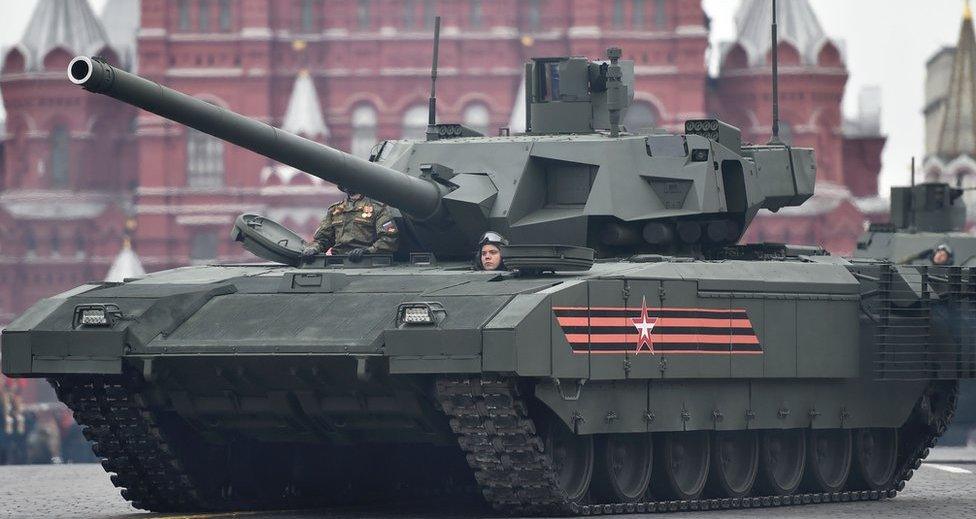
The Armata is a highly automated tank that will replace much of Russia's Soviet-era armour
Analyst Dmitry Gorenburg of Harvard University dates the start of the Russian modernisation programme to 2009. It was a response, he says, to the evident shortcomings in the Russian military campaign against Georgia.
He says the main focus was "the improvement of the speed of decision-making and communication of decisions to the troops, and interoperability among military branches, followed by the replacement of Soviet-era equipment that was rapidly reaching the end of its service life".
The results have been significant. According to Michael Kofman of the Wilson Center's Kennan Institute, "by 2012 Russia had reorganised its armed forces from a Soviet mass mobilisation army into a permanent standing force, and began improving quality across the board".
This was coupled with an intense regimen of snap checks on readiness and countless exercises, to the extent that "by 2014 the Russian military was markedly improved compared to its lacklustre performance in the Russia-Georgia war in 2008," he says.
All the experts I spoke to insist that the initial focus of the Russian effort has been on Ukraine, not the Baltics. Indeed, Michael Kofman argues that the war in Ukraine imposed unexpected requirements on Russia's military, which found itself lacking permanently stationed forces on the country's borders, and ill-positioned for the conflict.
"Russian armed forces," he says, "were, and still are, in transition."
To address the prospect of war with Ukraine in the medium to long term, he says, Russia "has spent much of the past three years repositioning units around Ukraine, building three new divisions, rebasing several brigades, and creating an entire new combined-arms army. The intent is for Russian ground forces to be in place just across the border should they need to reinforce proxies in the Donbas, invade from several vectors, or simply deter Kiev from thinking it could quickly retake the separatist regions by force".
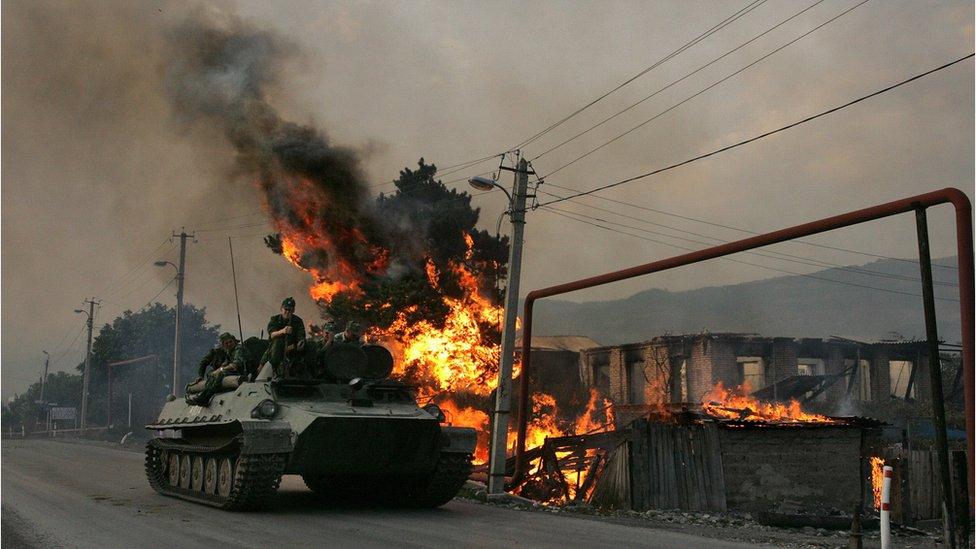
Some analysts say Russia's modernisation programme was a response to its shortcomings in the Georgia conflict
Ukraine may be the immediate strategic concern of the Russian general staff. But as Keir Giles notes, "Russia is developing its military infrastructure all the way along its western periphery - not just opposite Ukraine, but also Belarus, the Baltic states and even Finland. They have re-organised in order to be able to deliver combat troops to the western border as rapidly as possible".
This includes "setting up new heavy road transport units in order to reduce their traditional reliance on railways to deliver armour to the operational area. That gives them a lot more flexibility to move in areas where road networks are better developed - primarily the west of Russia, including across the border in Russia's western neighbours," he tells me.
Given Moscow's focus on Ukraine, have some Nato countries over-reacted to the perceived Russian threat? Not at all, says Keir Giles. On the contrary, he insists, the concern is that Nato has under-reacted.
"The direct military challenge from Russia, and confirmation of Russia's willingness to use military force against its neighbours," he argues, "with few exceptions, hasn't translated into European countries taking a serious interest in defending themselves."
He adds that the failure of many Nato allies to meet even symbolic commitments, like the pledge to spend 2% of GDP on defence, let alone urgent real measures like regenerating the capacity for high-intensity warfare to match Russia's developing capabilities, "speaks of an unwillingness to recognise politically inconvenient reality".
Trump changes mind over Nato
That reality, according to Michael Kofman, is nothing short of a transformation of the Russian military. "Reform, modernisation and the combat experience gleaned from Ukraine and Syria will have lasting effects on the Russian armed forces," he told me.
"Russia," he says, "retains the ability to deploy decisive force anywhere on its borders, overpowering any former Soviet republic. In terms of its strategic nuclear arsenal, Russia is not only a peer to the United States, but actually ahead in modernisation and investment in non-strategic nuclear weapons.
"Meanwhile Russia's conventional forces are now capable of imposing high costs on even a technologically superior adversary such as Nato in a high-end conflict - i.e. a fight would be quite bloody for both sides."
That is hopefully an unthinkable situation. At root, though, Dmitry Gorenburg believes that "Russia's conventional capabilities will be nowhere near as strong as those of the US military or Nato forces as a whole".
Above all it is readiness, proximity, and the ability to mass fire-power quickly that gives Russia an immediate local advantage. But Nato needs to get the threat into perspective.
As Michael Kofman notes, "Russia is a Eurasian land power, bringing a lot of firepower to the fight, but its strength shines when fighting close to home."
Nato's defence and research budget dwarfs Russia's, as does the base capacity of the alliance to generate forces and equip them in a prolonged conflict.
"The bottom line," he says, is that "while Nato has genuine worries on what a short-term conflict with Russia might look like, the reality is that this is the world's pre-eminent military alliance, at the core of which is still an incredibly potent military power, and a sustained fight would probably end disastrously for Moscow."
The Russian military is simply not structured to hold substantial territory, or to generate the forces needed for a prolonged conflict. Nato needs to be ready, in the view of experts. If deterrence is going to be credible it needs to restore its ability to fight high-intensity combat, a capacity that has atrophied during the counter-insurgency campaigns in Iraq and Afghanistan.
The consensus among the experts seems to be that Ukraine was a warning bell. Russia's newfound assertiveness is not to be confused with a desire to launch a military attack westwards.
Indeed, the immediate Russian threat may come from its information warfare and cyber campaigns directed against the West. That's a battle that has already been joined. And it is one the West is equally ill-prepared for.
- Published30 May 2017
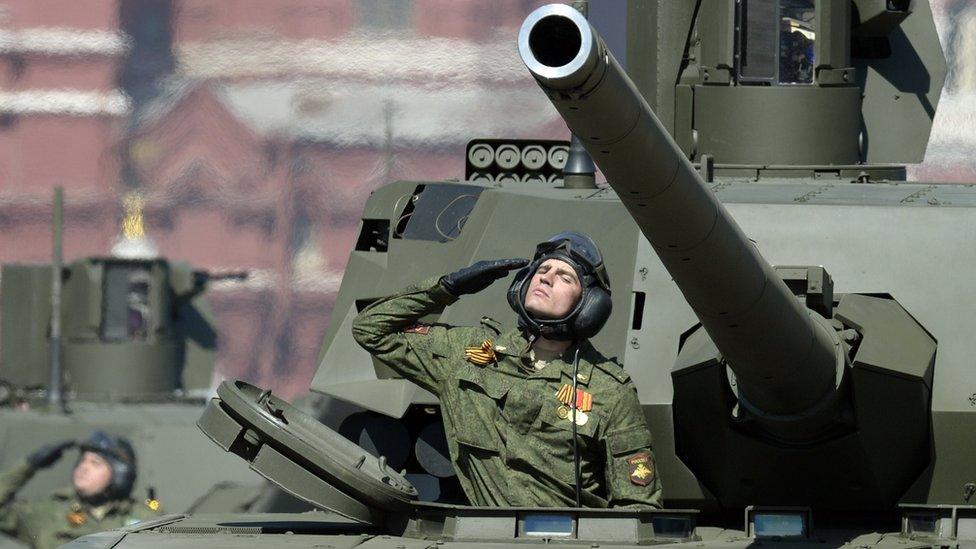
- Published25 May 2017
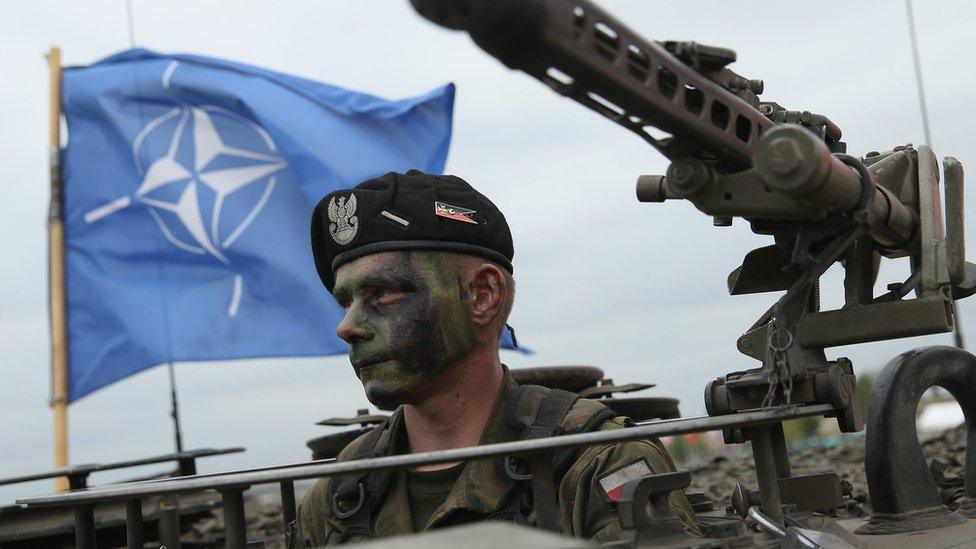
- Published25 May 2017
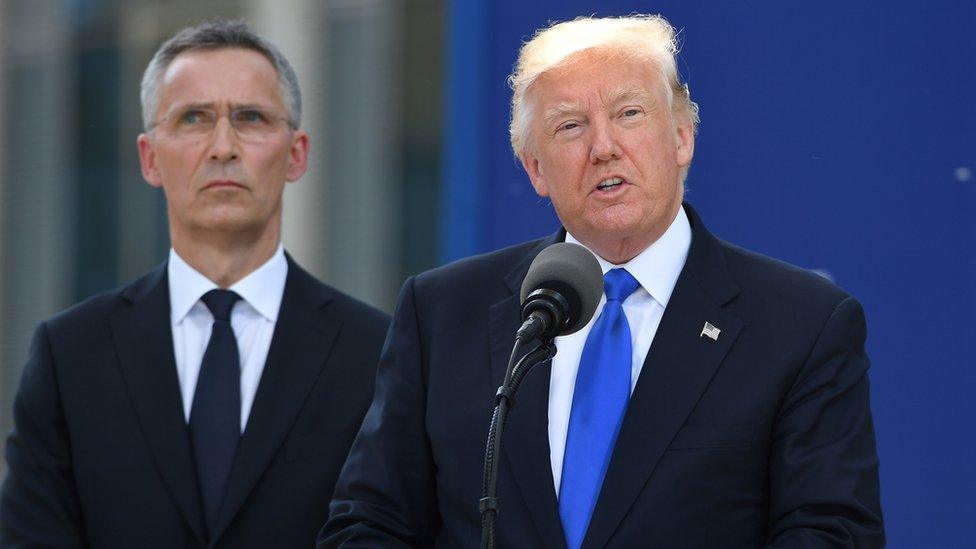
- Published3 March 2017
